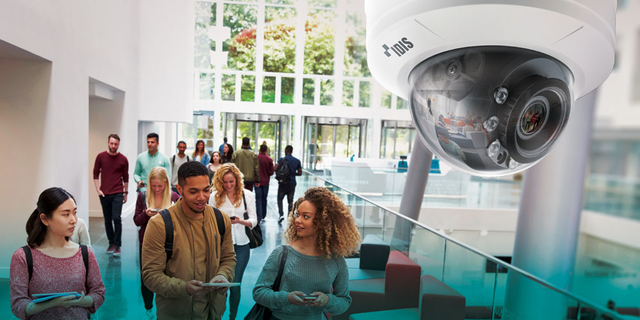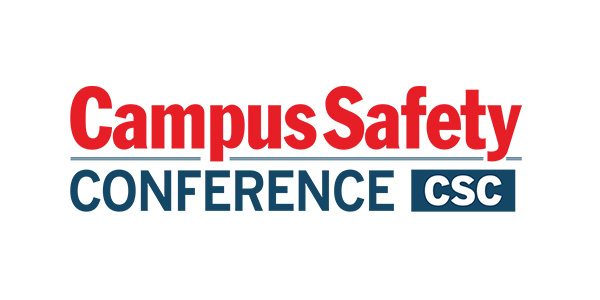There is no one-size-fits-all plan for campus security planning, so the best video technology should be utilized at each location, taking a holistic approach. It helps to begin with a comprehensive overview of available primary NDAA- and TAA-compliant video solutions.
It is beneficial to incorporate your site into three broad zones: the perimeter, the grounds, and the building interiors. Depending on the layout and use of the buildings and facilities, sub-layers will become apparent within each zone.
Solutions, from the perimeter to the interior
Video at the perimeter plays a key role in ensuring early detection of potential threats and allowing maximum time for response.
New AI video analytics technology will automatically detect people, vehicles, and a growing list of specific object types with a high degree of accuracy. This underpins an array of valuable capabilities, from line-cross to loitering detection. These can be precisely targeted using IDIS Edge AI cameras, which are affordable, flexible, or available system-wide through IDIS Solution Suite VMS software.
In practice, a security control room can be upgraded with a video monitoring solution that provides automatic instant warning if a specific event occurs – such as a person crossing a perimeter line or a vehicle approaching. Predetermined responses can include rapid investigation by officers, audible alarms, lights, or remote verbal warnings.
These functions are no longer limited to control rooms; apps such as IDIS Mobile Plus put enterprise-level VMS at the fingertips of officers or managers on mobile devices.
Night vision capability is critical for analytics, and chipset advances have eliminated the need for additional and expensive lighting, such as those found in the Lightmaster range, which has visibility in virtual darkness over long distances. IDIS bullet cameras, with 12x zoom and 4K resolution, deliver long-range image capture in detail, while the new AI PTZ is perfect for perimeters and is set to give operators 40x zoom. All devices for exterior use should be IP66-rated against water and dust and IK10-rated for impact resistance to ensure lasting operability.
Robust video intercoms deliver higher-resolution scene visibility and integrate into wider video and security systems. Paired with other imaging technologies, like LPR (License Plate Recognition) cameras, video intercoms can be installed to provide a view of the driver’s face alongside license plate information, removing the need for officers to be continually stationed at entrances and aid in limited staffing situations.
Imaging solutions for campus facilities include fisheye cameras, which deliver comprehensive, broad area coverage utilizing fewer devices. Edge AI multi-sensor cameras filter out false alarms, can zoom in to verify events, and initiate an informed, rapid response. Two-way audio capability can also significantly enhance video systems, allowing remote intervention.
From lobbies to libraries, cameras with Wide Dynamic Range (WDR) will cope with changes from bright sunlight to dappled shadows in interior locations subject to fluctuating lighting conditions.
Two further considerations: Today’s VMS platforms offer advanced features and capabilities, making them hard to differentiate. Three key comparison criteria you should look for and evaluate are scalability, health monitoring ability, and possible hidden costs.
Finally, your solution should guarantee redundant recording. Systems with distributed architecture, where NVRs/servers are strategically located across the campus, and failover protection against data loss in the event of network instability will ensure that footage is always retained and available.







